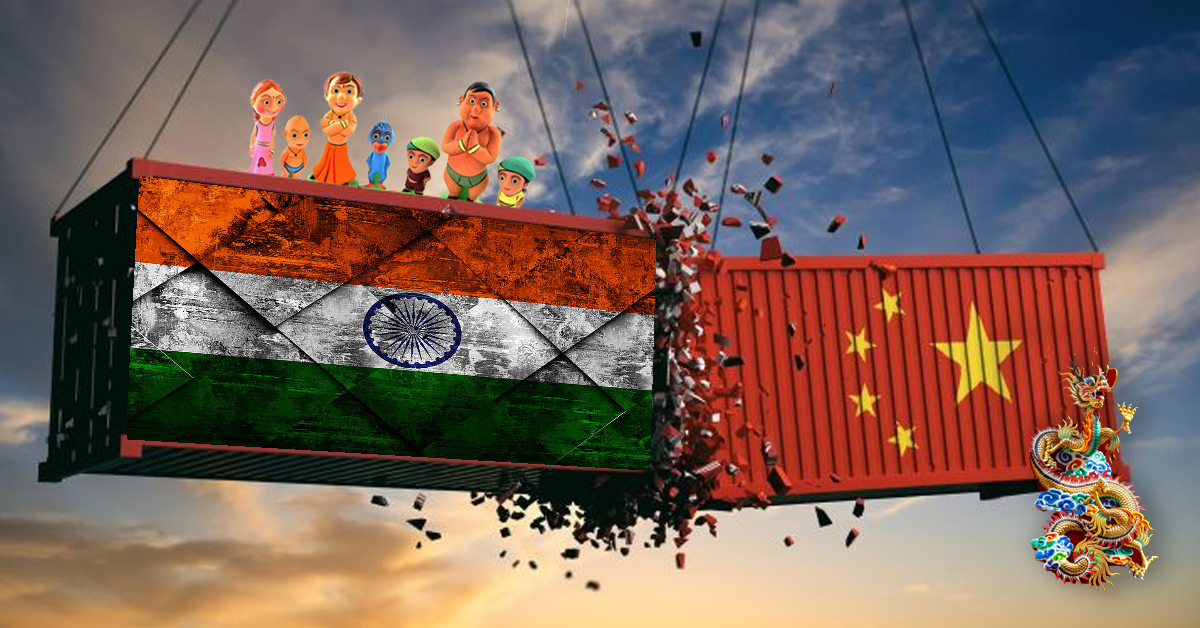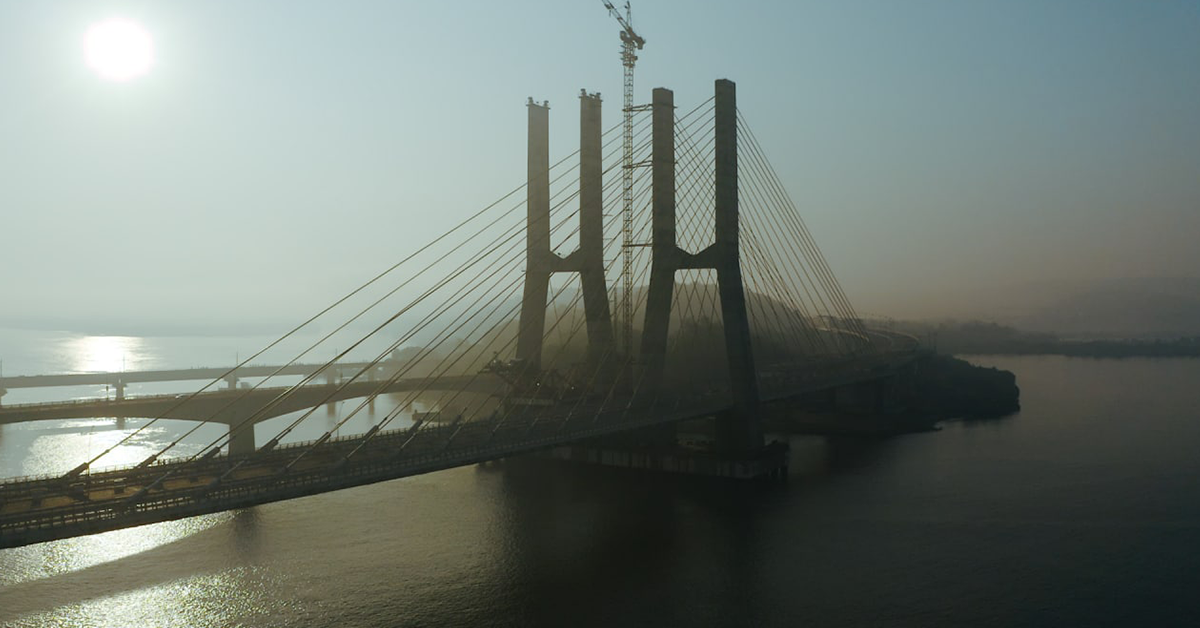Atal Setu or the Mandovi River Bridge, a dream project of Goa Chief Minister Manohar Parrikar is expected to decongest Panaji traffic and serve as a bypass for those who want to travel from north to south without entering Panaji.
Challenging the Dragon - India's Toy Story
Today, a much-needed government boost to the global imprint of Indian toys is evident from Modi government’s emphasis on bringing in transformative changes in the domestic toy industry by promoting “Vocal for Local” and “Make in India” under the Aatmanirbhar Bharat scheme. India under Narendra Modi has made a beginning in self-reliance, and if followed up, India can become a major global player in toy manufacturing.
Read Time: 11 minutes
Introduction:
Back in 2009, the Congress led UPA government found that Chinese toys in India contained high levels of cadmium and lead — known to cause cancer. Regular exposure to these metals can also hinder brain development in kids. They were also found to have phthalates which are known to cause allergy, asthma, skeletal defects, and impair the lungs in children. In 2010, under the Congress led UPA government, the Centre for Science and Environment found over 45% of toy samples tested exceeded accepted safe limits for phthalates. What action did the Congress led UPA government take? They implemented a six-month ban on Chinese toys. That’s it! But such disappointing actions should not come as a surprise. For, a government which is busy in protecting its corrupt ministers and covering mind-boggling scams can’t be expected to do much for the development of the country. In contrast, when in 2019, Quality Council of India found that over 67% of imported Chinese toys failed to meet India’s quality standards, the Narendra Modi government took swift actions which would revive and revitalize India’s toy story. The “Vocal for Local” call from Prime Minister Narendra Modi aimed at improving India’s position in the toy economy or “toyconomy”. Urging startups and entrepreneurs, Narendra Modi encouraged India’s talent and her ability to become a toy manufacturing hub. “Team up for toys,” he exhorted.
Modi Government Policy Initiatives:
Modi backed his talk with concrete steps, which are seen as reasons behind recent growth spurt. In February 2020, the Modi government increased basic import duty on toys from 20% to 60% and then to 70% in February 2023. In January 2021, the Modi government floated BIS (Bureau of Indian Standards) quality certification for all toy manufacturers and importers. The quality-control norms require all toys and materials designed or intended for use in play by children below 14 years of age to be certified by the BIS. The certification is necessary to be eligible to sell in India. Selling without certification can attract fines and even criminal prosecution. In addition, the Modi government did not issue even a single BIS license to any player from China, while granting more than 850 BIS licenses to Indian toy manufacturers, resulting in a significant fall in toy imports from China. Several promotional initiatives including, The India Toy Fair 2021, Toycathon 2021, Toy Business League 2022 were conducted to promote indigenous toys and to encourage innovation and new-age design to suit global requirements. This gave our Indian manufacturers enough space to grow.
In 2020, the Modi government developed a comprehensive National Action Plan for Toy Sector to boost local manufacturing, and incentivize toy and handicraft manufacturers to make India the next global toy production hub. The plan is being implemented in collaboration with 14 ministries including — education, textiles, railways, science and technology, and information and broadcasting. It covers a host of initiatives ranging from — increasing awareness to developing toy manufacturing clusters, from building toy museum to strengthening R&D, from building ecommerce platforms to promoting online gaming.
In addition, Modi government’s New Education Policy, which focuses on vocational education in schools along with enhancing cognitive and psycho-motor skills will also encourage the global toy market to look to India as a manufacturing destination and realign its supply chains.
Encouraging the Industry:
Modi government’s move to prohibit the sale of non-certified toys in the country played a game-changer role in boosting domestic manufacturing and reducing imports from China. Besides, several hand-holding gestures by the government have empowered 4,000+ manufacturing units rewrite the Indian toy story. Under the Ministry of MSME’s Scheme of Funds for Re-generation of Traditional Industries (SFURTI), an outlay of ₹ 55.65 crores has been allocated to a total of 19 toy clusters with the aim of benefitting 11,000+ artisans by providing aid in terms of latest machines, design centers, raw material bank, and skill development programs. The Office of Development Commissioner (Handicrafts), Ministry of Textile, is also developing infrastructural support for the artisans of handmade toys in India.
The country’s first toy manufacturing cluster was started in Koppal, Karnataka across 400 acres. The project is expected to attract ₹5,000 crore worth of investment and generate 40,000 jobs over five years. The Modi government is also providing capital investment subsidy upto 30% of fixed assets, a wage subsidy of ₹1500 per month per employee for five years, an interest subsidy of 5%, a freight subsidy upto 75% for exports, guaranteed power supply at ₹2 per unit for five years, a 50% reimbursement of rent and a training assistance of ₹12,500 per candidate, apart from other incentives for all units located in the toy cluster SEZ.
Uttar Pradesh government on the other hand is expecting a ₹3,000 crore investment in the proposed 100-acre toy manufacturing hub in Greater Noida. Maharashtra has also proposed to set up clusters at Khalapur, Shahapur, Nashik, Malegaon and Solapur. Clusters are also planned to be located at Channapatna, Kinhal, Kondapalli, Etikopaka, Nirmal, Tanjore, Cudappah, Varanasi, Chitrakoot, Jaipur, Dhubri, Bishnupur and Indore.
The government is also planning to launch a PLI scheme for the toy sector with an outlay of ₹35 million. The investment slab for availing the PLI incentives could be kept as low as ₹50 million to encourage MSMEs. Further, the proposed PLI incentives will be eligible for manufacturers of finished toy products, and not toy components, thus providing much needed impetus for the toy sector which is still heavily dependent on import of raw materials and components, such as electronic components for toys and fabric for soft toys.
The Results:
Earlier, the Indian toy market was crowded with imported goods, mainly from China. Only 20% of the toys sold were made-in-India. Of the rest, China had a 75% share. But because of Modi government’s initiatives, the cheap made-in-China toys have made way for Made in India products. More than 100 toy manufacturers in Delhi-NCR, which were struggling to survive until a couple of years ago, are now on an expansion drive. Today, the import of toys which stood at ₹2,960 crore in FY19 fell to ₹870 million in FY22. While imports declined 70%, exports rose by 61%, signifying the independence of this industry from the Chinese market. Compared to FY14 when exports were ₹167 crore, FY22 saw them rise by 508% to ₹1017 crore.
The Indian toys market reached a value of $1.5 billion in 2022. The market is expected to grow at a CAGR of 12.2% during 2021-2026. The domestic toy market is slated to grow to $3.3 billion by 2028. Today, India is one of the fastest-growing toy markets expanding at a CAGR of 13% against the global average of 5%.
Many of the Indian STEM (science, technology, engineering and mathematics) startups — Butterfly EduFields, Skillmatics, JackinTheBox and PlayShifu, to name a few — are gaining ground in the international market dominated by big names like Lego, Mattel and Hasbro. Indian manufacturers have also started exploring new markets in Africa and the Middle East. The Indian toy market hopes to wean away major toy companies from China and other countries. The industry which is labor intensive could effectively compete against China and generate lakhs of jobs supporting the MSME sector.
The scope is immense. And because of the right impetus given by the Modi government, the Indian toy market has the potential to grow immensely, considering it occupies a meagre 1% of the global market. Further, it is estimated that for every $100 million investment in the sector, 20,000 direct jobs, and another 8,000 indirect jobs can be created.
Challenging the Dragon:
During the Congress led UPA tenure, the toy industry was languishing due to lack of investments, policy initiatives, competition from cheap imports and overall neglect from a government muddled in scandals. Traditional toys had long been forgotten, and local industry was fragmented and under the dominance of cheap Chinese goods. But today, the battle lines have been drawn for India’s assertion in the global toy industry. Prime Minister Narendra Modi himself has drawn the lines for this battle.
Today, a much-needed government boost to the global imprint of Indian toys is evident from Modi government’s emphasis on bringing in transformative changes in the domestic toy industry by promoting “Vocal for Local” and “Make in India” under the Aatmanirbhar Bharat scheme. Now the made-in-India toys have a very clear edge in the domestic markets and Indian manufacturers are scaling up their production capacity to meet the growing local as well as international demand.
India has a window of opportunity to replace Chinese toys in the domestic market, but we as the citizens need to promote our Made in India toys as well. With more engagement, skill diversification, and entrepreneurial enthusiasm, the revival of the Indian toy industry looks imminent. India under Narendra Modi has made a beginning in self-reliance, and if followed up, India can become a major global player in toy manufacturing. Growing western distrust in China and India flexing its manufacturing muscles can become another developing story of Aatmanirbhar Bharat.
Tags: The New India, Business
Share this article:
Leave a Comment
Recommended For You
India's widest and second largest cable-stayed bridge in India, the Zuari bridge in Goa will enhance the economic activity of the state.
The Bengaluru-Mysore Expressway is a testament of Modi government's commitment to improving transportation infrastructure in the country. Improved connectivity between Bengaluru and Mysore is likely to lead to increased business opportunities and tourism in the area.
The Bogibeel bridge over the Brahmaputra will boost defence logistics along the China border and increase the economic activity of the long-time neglected Northeast region.
In a historic moment for India, Prime Minister Narendra Modi flagged off MV Ganga Vilas, the world's longest river cruise which makes a journey through India and Bangladesh, showcasing the rich heritage and culture of both countries.
Fast-tracked by Narendra Modi, besides supporting the Armed Forces, the Atal Tunnel is destined to play a defining role in the future development of the region.
India's first semi-high speed train, the Vande Bharat Express, was launched by Prime Minister Modi on 15 February 2019. The train offers Indian travelers a myriad of superior amenities and provides passengers with aircraft like travelling experience.








